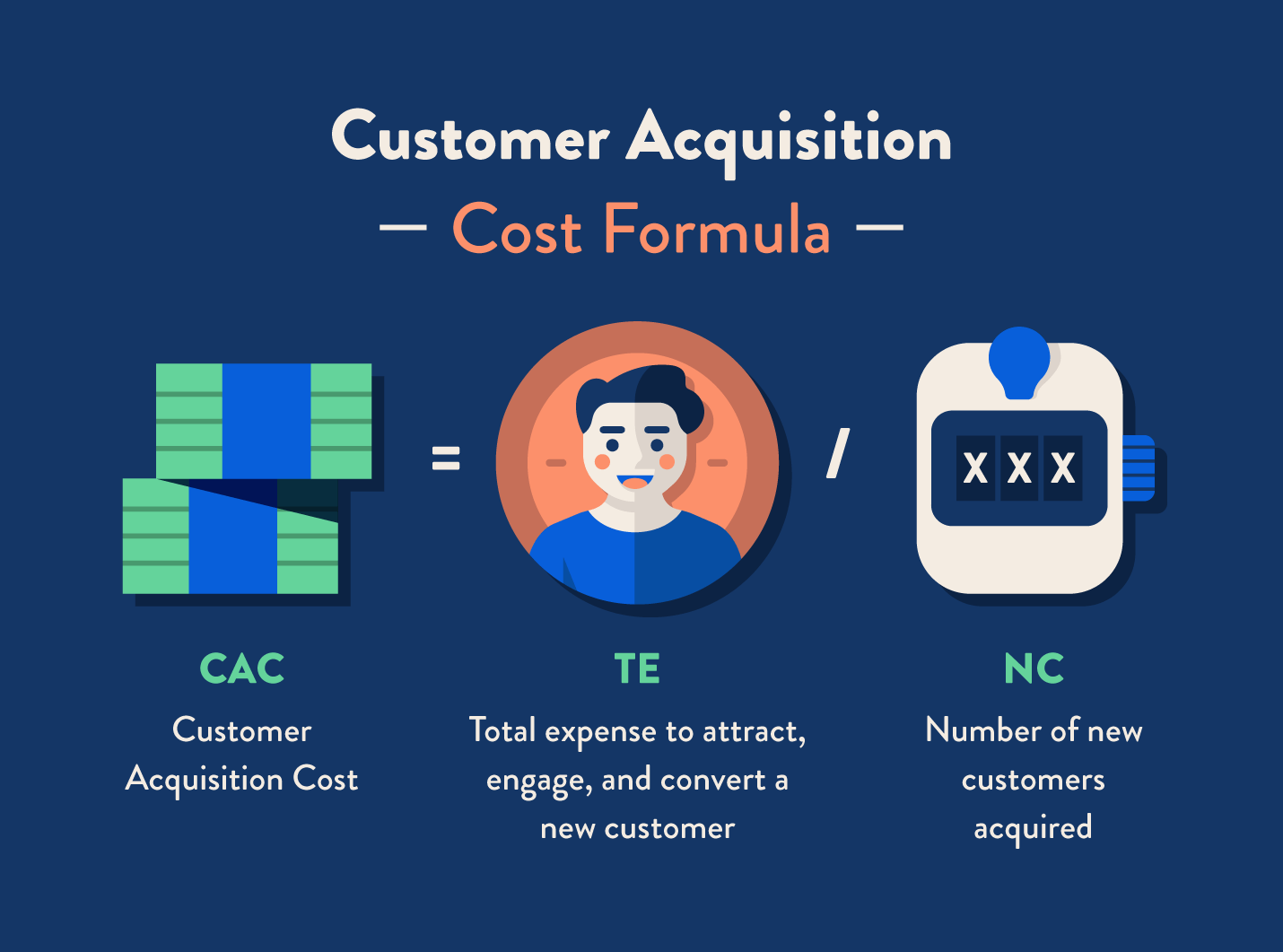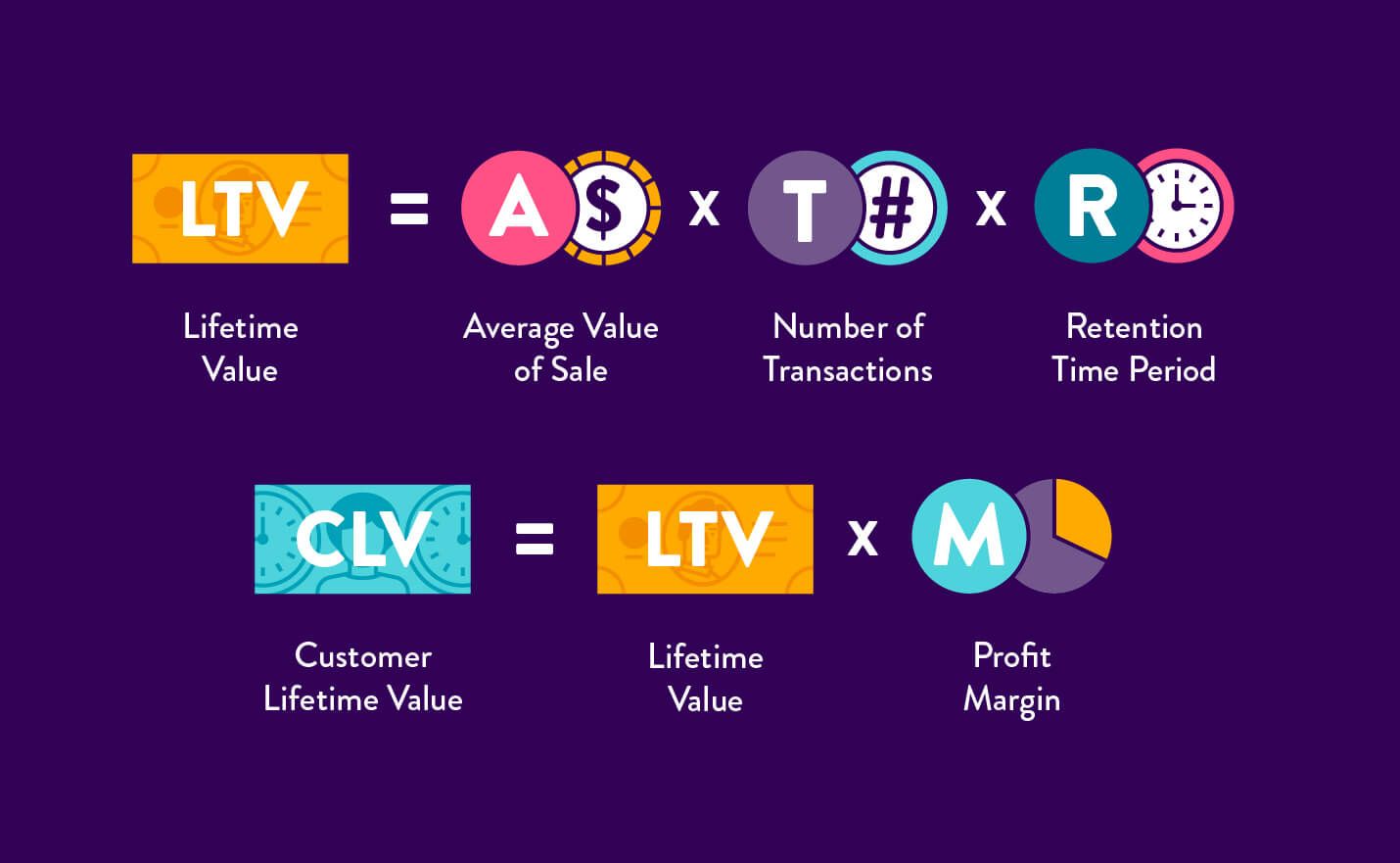Acquiring new customers is essential for driving and maintaining business growth – but it’s one of the most challenging responsibilities for marketers. Today, businesses need strategic, multifaceted acquisition strategies to reach and convert their target audiences and gain a competitive edge. That's why we've created this in-depth guide to shine a light on the key components of planning and executing a customer acquisition strategy that gets results.
First, we’ll cover the fundamentals – defining customer acquisition, assessing its importance, and studying the customer journey and acquisition funnel. Next, we'll take a look at the most effective strategies and tactics marketers can employ to drive up customer acquisition numbers. You’ll learn how to break through the noise to capture high-intent leads, optimize your website and landing pages to convert visitors, and nurture leads through personalized multi-touch campaigns.
Finally, we'll take a look at the all-important Customer Acquisition Cost (CAC). We'll examine how to calculate CAC, and consider what a good customer acquisition cost looks like.
Let’s get started!
What is customer acquisition?
Put simply, customer acquisition refers to the strategies and processes involved in bringing new customers to a business. It's a key activity in marketing, which focuses on identifying target audiences, attracting them to the brand, and ultimately converting leads into paying customers.
Effective customer acquisition relies on engaging in thorough customer and market research to develop competitive value propositions that resonate with potential customers.
There's a wide variety of tactics marketers can employ to acquire new customers. For instance, advertising campaigns are often used to increase brand awareness, and promotions and referral schemes can be used to incentivize first purchases. Similarly, content marketing and SEO are vital marketing activities that aim to attract visitors to the brand's website by appearing on relevant searches and providing helpful information that solves customer problems.
Overall, customer acquisition involves understanding consumer insights, aligning cross-functional teams, and continuously optimizing performance. When done well, it should enable predictable growth by consistently bringing in new customers to expand the business's market share.
Why is customer acquisition important?
Customer acquisition is vital to the health of any business in that it helps organizations to bring in new customers which can help to maintain and grow revenue. It can also increase sales and brand awareness due to the marketing activities associated with customer acquisition such as social media advertising.
What is the customer acquisition funnel?
Mapping the customer journey involves identifying the typical stages and touchpoints a prospect goes through on their path to eventually becoming a customer.
Understanding the typical customer journey enables marketers to develop strategies for how to target, attract and nurture leads at each stage. A key framework for mapping the journey is the sales funnel, which illustrates how prospects go through the sequential stages of awareness, consideration, conversion, retention – and eventually advocacy.
At the awareness stage – in which prospects may not know they have a problem or need – marketers aim to get on the target buyer’s radar through broad outreach. As prospects move down the funnel and show initial interest, marketing nurtures continued consideration, often with branded content and promotions, designed to turn curiosity into purchase intent.
At the conversion stage, sales teams take over to qualify leads, demonstrate value, overcome objections and close deals. After purchase, customer success and marketing retention strategies aim to cultivate loyalty.
Each stage of the funnel requires tailored messaging and initiatives to move prospects further down the path to becoming happily loyal customers. Mapping the nuances of your unique customer journey through the sales funnel framework allows you to deploy stage-appropriate strategies to generate and mature leads.

Top customer acquisition strategies
So we’ve talked a little about the customer's journey, but what about your journey as a product marketer? What do you need to do to entice customers into the funnel?
Don’t worry, we’ve got you covered. We’ve got free strategies, paid strategies, inbound and outbound strategies – and best of all, these methods can be used on a small scale or a much larger scale, the sky’s the limit.
Content marketing
Content marketing is a highly effective way to acquire new customers for all types of businesses. In a world full of false promises and dwindling consumer trust, content marketing is a great way to share how authentic your business is. You love what you do and want to share your expertise and enthusiasm with everyone, honestly what is more wholesome than that?
For this reason, blogging is a great option. It allows you to explore all kinds of different topics and most importantly engage with your audience, whether that’s through an article they can share or bookmark for later or a question you can answer in the comments, blog posts can create an enticing, clickable call-to-action.
If you already have a blog, you could generate more organic search traffic to your website by doing very little, seriously, the absolute bare minimum; 😉 sounds good right?
A lot of older blog content languishes in the bottom of a time-based feed, never to be read again, archived deep into the website's architecture. But what if we told you, you could upcycle that content like an old chest of drawers, and rebrand it as new?
Older posts tend to get a lower share of internal PageRank unless they have a lot of backlinks from external web pages, they barely rank in a search engine. One quick solution is to change the date of the blog post and republish it, taking the post to the very top of the feed and giving it a significant boost, PageRank wise.
If you add in some extras or update any old stats or references, you can re-promote it on social media and earn even more backlinks from external websites.
If you want to visualize an idea or a product demonstration for potential clients, video is the obvious route, with cheaper, higher-quality cameras more readily available, you don’t have to be Spielberg to make decent video content. Content is infinitely more important than quality. An interesting idea or creative, offbeat clip will ultimately generate more shares and engagement than a dry, corporate, instruction video, no matter how much it costs to produce.
Social media
Social media marketing consists of two methods: organic and paid. Organic social media is most useful for boosting brand awareness, developing a company personality and sharing content you’ve published elsewhere (like from your blog or videos). When done right, social media can inspire customers to become one of your best marketing tools, sharing the company's content and recommending products or services to other users.
It does have its drawbacks though, posting organically can sometimes feel like yelling into the void, except that void is filled with 3.8billion people who are simultaneously being yelled at by billions of other companies at the same time. This is why it’s absolutely vital you’re yelling at the right network of people - it’s that old adage of knowing your audience. If you’re targeting Millennials, you should definitely include Facebook and Twitter, if it’s Gen Z you’re after, head over to Instagram or TikTok and lip sync to some Drake while doing the toosie slide (don’t do that, we’re totally joking).
Depending on your budget and audience, paid social media might be a better option for your business. It’s an easy way to get your content out there in front of an audience without having to build a following.
While sponsored posts on Facebook, Twitter, or Instagram get your content out there, Facebook Lead Ads allow you to advertise on social media and gather customer’s email addresses and names. If you’re looking to compile a list of leads then this might be the method for you.
Search engine marketing
Organic search marketing, also known as search engine optimization (SEO), is also available in two flavors: organic and paid.
By optimizing your content it’s a ton easier for your target audience to find. Most people click on the first search results offered to them, after all, who has the time to go scrolling through pages and pages of results? By using SEO you're creating content that appears right at the top of the search engine results page (SERP) so consumers can click on your content instantly.
There’s a lot that goes into SEO, but these are a few basics to get you started.
If you have the time to learn SEO strategies, stay up to date with trends, and optimize your blog posts — you’ll find your content ranking higher than ever before.
On the other hand, if you have neither the time or the resources, paid search marketing (pay-per-click or PPC) is a great alternative, it’s basically advertising on a Google SERP itself. PPC allows you to create a search result and pay for it to show up with organic results, increasing your chances of being found by searchers.
Email marketing
Email marketing might seem a bit out of date, but it's actually still a really effective way to gain customers.
It’s a great way to connect with your audience, you can promote events, offers and discounts, you could even wish customers a happy birthday and offer them a little discount for their special day.
It's also a really helpful way to keep an eye on your recipient’s behavior, watch which links they click in the email, monitor which sections received the most engagement and you can learn what your subscribers are really interested in and tailor your campaign accordingly.
And of course there are a ton more options out there too, like:
- eBooks
- White papers
- Co-branded content
- Partnerships
- Guest posting
- Affiliate links
- Answering questions on Quora/Reddit
- Building custom tools/apps/quizzes.

How to successfully nurture and convert leads
Once you've started generating a steady flow of inbound leads, the next step is to develop strategies geared toward converting those leads into paying customers. An effective conversion process captures lead information, qualifies prospects, and moves them smoothly through the sales funnel.
Website Optimization
If your website is often the first touchpoint for leads, it's critical that you optimize it for conversion. This process typically includes:
- Clear calls-to-action – Make sure visitors understand what to do next at each stage. Use action-driven language.
- Frictionless forms – Collect only essential info upfront. Avoid lengthy lead gen forms.
- Persuasive copy – Communicate your value prop and credibility throughout the site.
- Mobile responsiveness – The majority of traffic is now via mobile. Optimize.
Landing Page Best Practices
Dedicated landing pages are essential for converting visitors from ads, email campaigns and other sources. Best practices include:
- Single, clear CTA button above the fold
- Minimalist design to emphasize the CTA
- Headline and copy focused on the offer or campaign
- Targeted form fields to capture key information
- Trust indicators such as testimonials, security badges
Lead Nurturing Campaigns
Once a lead is captured, the nurturing process keeps them engaged and moves them through the sales funnel via personalized, multi-touch campaigns. Tactics include:
- Segmenting your lists based on lead stage, actions or demographics
- Triggered email series when users complete actions
- Content offers delivering value and building credibility
- Retargeting and remarketing ads to re-engage inactive leads
- Two-way communication at each stage to build relationships
With strategic optimization, landing pages, and nurturing, you can maximize conversions and develop qualified prospects ready for sales team contact. Continually test and refine your processes to improve performance over time.
Tips for a successful acquisition
Shirin Shahin, Founder, Product Marketing Leader & Consultant at Shirin Shahin and PMA Ambassador, shares her top tips for successful customer acquisition.
"My key tip in this phase is: Engage your audience fast, learn fast and iterate fast.
"There are a few critical pieces of product marketing work that needs to happen in this phase including:
1.Test your messaging with your target audiences.
3.Continue your positioning work!
4.Start to create a Customer Advisory Board."
Test your messaging with your target audiences
"Your key mission when you are starting to gain your first set of customers is to ensure that you are communicating the right message to the right people at the right time. Ideally, you started to formulate your positioning and messaging during the Product Development phase. You likely did some market research, talked to internal teams, identified what problems you are solving and in turn created some customer facing messaging.
"However, until you really test this messaging out – you don’t know if it will resonate.
"I recommend you categorize your messages based on goals. Without goals, how do we know if we are successful?
"Some categories of messages could be around:
Product Usage: Do these messages encourage someone to test out the product?
Increase Lead Gen: Do these messages encourage someone to click your ads?
Website Engagement: Do these messages encourage a path for your users on your website – i.e. they go beyond the homepage?
Sales: Do these messages resonate in sales scripts/email communications?
"Once you establish the right categories, organize your messages in this way and test them out. Do some A/B testing. As an example, you can test by sending one message from your “lead gen” group to half of your audience and then another to the other half. See what happens.
"This is crucial early on – identifying a few of your most resonating messages sets you up to develop and grow your messaging from there. Get your baseline ready to go."
Validate Your Personas
"We talked about identifying your target personas in the first post. Identifying is one thing and then validating is a whole other thing.
"Again, a persona is essentially a fictional character that resembles your target audience. As your audience starts to use your product you are going to confirm whether the personas you identified are accurate."
What could happen?
- "There could be new personas identified
- There could be personas you envisioned as “users” but they end up being your “buyer”
- You may completely even invalidate a persona – they aren’t a fit for your product. So valuable to know this!
- Your personas are spot on
"A key area of focus here is to watch WHO is using your product (user), WHO is engaging with sales messages (buyer), WHO is usually passing you to someone else (influencer), etc. Even better, gather a few of them and interview them to ask what features are resonating with them in the product, why they are engaging with your product, what messages resonated or why they may not be interested at all.
"Learn as much as you can about them. This takes time but it is so crucial at this stage."
Continue and finish your positioning
"Positioning work should start from the product development phase, in that if you don’t know the problem you are solving , you wouldn’t even have a product. Therefore, positioning starts early and then rolls into this phase as well. And, it is never really done, hence 'finish' Positioning is always a work in progress. When you have new features launching, you need to update your positioning documents. When you identify new competitors, you may need to update your key differentiators, and so forth.
"However, in this phase, as you start to onboard customers to your product/service, it is a ripe time to complete this. Below I have laid out the various sections of a positioning document.
- Key market dynamics
- Target audience(s)
- Pain points
- Key competitors
- Key differentiators
- Features & benefits
- Positioning statement
- Sample customer facing messages"
Start your first customer advisory board
"Your earliest set of users/customers (and I use these interchangeably because they may or may not be paying depending on how you launch) are unique and have very specific qualities. They are likely the most enthusiastic about your brand, they love trying new products and features, tend to be more technical and they are also typically the most vocal.
"Therefore, this group is ripe to become the first set of customers in your Customer Advisory Group.
"A Customer Advisory Board is a group of some of your most engaged customers, who represent your target personas and get together regularly to discuss a variety of topics."

Use product storytelling to drive user acquisition
You’d perform better with product-led storytelling, as is evident in two popular product sales decks to have graced the SaaS industry.
Not only were the product-led story sales decks of Drift and Zoura exceptional, but you wouldn’t be wrong attributing the companies’ giant growth leaps to those sales decks.
In both cases, marketing expert Andy Raskin observed that these sales decks perform so well by flashing the dreamlands their target audiences crave and the challenges they must overcome to get there in the form of stories.
They also ended the decks with success stories showing how to overcome those challenges and access that dreamland using their products.
But Drift and Zoura are big brands with deep pockets and connections to land spots at major events where such sales decks work, you say. Will product-led storytelling work in a product demo scenario? Again, DocSend proves it will.
Courtney Chuang Narrated how DocSend leveraged product-led stories to significantly improve the performance of their product’s sales pitch deck. According to her, they ditched their original branded sales deck for a sales story “focused on developing a strong narrative in which [their] product could live.”
How to optimize your customer acquisition strategy
So now you have some solid strategies under your belt, here’s some advice on how you can optimize them for maximum impact and longevity.
Think long term
A sustainable strategy is a wise investment, whether you're investing, time, money or people, you want to make sure that whatever you're doing will work in the long run.
We’ve already talked about blogging as a way of acquiring new customers, but again this is a great example of a sustainable strategy, as long as you have the tools and resources in place one or two posts could be bringing organic traffic to your page for months or even years. When you compare that to advertising, the cost is considerably less and so is its lifespan.
Always be flexible
The way customers respond to marketing and sales is constantly evolving and it’s more important than ever to keep your strategies as flexible as possible.
Consumers don’t trust anything a brand has to say about its own product. Harsh but true. In a recent HubSpot study, 81% of consumers said they trust the advice or recommendations of family and friends over a business. Your strategy needs to be as flexible as possible to respond to market trends, while salespeople were once the trusted experts on product information, consumers are now looking elsewhere for recommendations.
Target your customers
Customer acquisition can be a huge waste of time and resources if you're not targeting the right market. If you can define your target audience you can find out their needs and meet them, if you can narrow down your target market you can find out how they consume media and tailor your market strategy accordingly.
Diversify your strategies
Diversifying your strategy and using different acquisition tactics means you have a better chance of reaching new customers and generating leads.
There’s also very little risk involved if one channel fails you can move the funds over to a better performing, tried, and tested method safe in the knowledge it really works.

How do you find the Customer Acquisition Cost (CAC)
Customer acquisition cost formula
So you’re ready to put your all into gaining new customers with all of the optimized strategies we’ve suggested. What comes next? Well, now we’re going to calculate your customer acquisition cost formula.
What’s that you ask? Customer acquisition cost or CAC is, quite literally...the cost of gaining a new customer or client. But how and why do you calculate that cost?Well, it’s actually a really useful tool to determine what resources you need to expand your customer base and still make a decent profit.You divide all of the money spent on acquiring customers (marketing, sales expenses, etc.) by the number of customers you gained in the period that money was spent.
For example, if you gained 10 customers and spent $1,000 on a targeted Facebook ad in one week, your customer acquisition cost would be $100.
Customer acquisition cost (CAC) $1,000 ÷ customers acquired (CA) 10 = $100

For a more in-depth look at CAC, you’d include all of the costs associated with marketing spend, including everything from salaries to the cost of the pens you used to jot down ideas.
Reducing your customer acquisition cost means the business is spending money more efficiently and should see higher returns in profit. It’s the perfect way to measure your customer acquisition success.
What's a good customer acquisition cost?
A Good Customer Acquisition Cost varies by industry, the individual business and the strategies used. But a good point of reference is comparing your CAC to your Customer Lifetime Value (CLTV).
But how do I calculate the CLTV, we hear you cry?
Let’s use Mcdonald’s as an example and some data from a report we just made up. We measure the weekly purchasing habits of 10 customers, then average their total values together. Using this information we can then calculate the average lifetime value of a Mcdonald’s customer. Here’s the process, step by step:
Calculate the average purchase value
First of all, we need to measure how much the customer spends every time they pass through those golden arches, this is their average purchase value. For example, if we visited Mcdonald’s three times in one month and spent around $12 (in the interest of transparency we have absolutely done this), our average purchase value would be $4.
Once we’ve calculated our average purchase value, we then repeat the same process for the other 10 customers. After that, we add each average together and divide that by the number of customers surveyed to get the average purchase value.
Calculate the average purchase frequency rate
Next, we need to measure the average purchase frequency rate. Basically, we need to know how many visits the average customer makes to Mcdonald’s in a week. The average observed across our fictional customer report is 3.2. This makes the average purchase rate: 3.2.
Calculate the average customer's value
Are you still with us? Good! Because this is where it gets a bit technical. Now that we know how much the average customer spends and how many times a week they visit Mcdonald’s, we can determine their customer value. Looking at all 10 customers individually, we multiply their average purchase value by their average purchase frequency rate. This tells us how much revenue a customer could generate for Mcdonald’s in one week. We need to repeat the calculation for all 10 customers, we then average all of their values together to find the customer's value.
Individually, ours would look something like this: $4 x 3.2 = $12.80
Calculate your customer's lifetime value
Once we know the customer value as well as the customer lifespan, we can use this to calculate the Customer’s Lifetime Value(CLTV). First, we need to multiply our average customer value by 52, this is because we’re measuring their habits weekly. Then we multiply this number by the customer lifespan value (which is how long our customers have been customers, in this case we’ll say five years) to get our CLTV result.

CLTV = Customer Value x Average Customer Lifespan
So for our imaginary Mcdonald's customers, the CLTV result is $3,343 (52 x 12.86 x 5= $3,343).
So now we have our CLTV and CAC result, it's easy to find the ratio between them. Just divide the CLTV by CAC. So if the customer lifetime value is $3,343 and the expenses for acquiring a customer are $1,000, then the CLTV: CAC ratio would be 3.3
So there you have it! We’ve scratched the surface of customer acquisition and flexed our math muscles.
If you’d like a deeper, more comprehensive understanding of customer acquisition (whilst getting certified in the process 😉), check out our Product Marketing: Core [On Demand] course. Or if you’re on the lookout for a more interactive, live PMM experience, check out Product Marketing: Core [Live + Online] option and learn in real-time, with a PMM expert.
Want to learn more?
Needing to measure your product marketing success is a huge part of the role. After all, how are you going to identify what works and what doesn’t without metrics and data to back it up?
Our Metrics Certified: Masters course will give you the knowledge and confidence you need to measure the impact of your work and continue driving, not just your product and department, but the entire company towards success.
By the end of this course, you’ll be able to:
🎆 Use formulas to correctly measure key metrics.
💪 Identify which metrics you should track for each deliverable.
👀 Understand how your work can positively influence these metrics.
🔦 Relate your KPIs to your OKRs and confidently report on the impact your function has on the business.
Ready to get started?


















 Follow us on LinkedIn
Follow us on LinkedIn





.svg)
Start the conversation
Become a member of Product Marketing Alliance to start commenting.
Sign up now